
The Centennial Issue was issued in 1940 to celebrate the centenary of British sovereignty.
The plates were produced by Bradbury, Wilkinson & Co who recess printed the stamps in the UK. The stamps were issued on 2 January 1940 and the second pictorials were withdrawn from sale.
The aim was that this issue was to be the definitive issue during 1940 after which they would be withdrawn and the second pictorials put back on sale. However, due to wartime conditions, they remained on sale until stocks were exhausted which, except for the ½d and 1½d values, was during 1941.
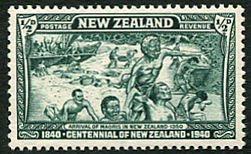
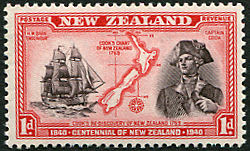
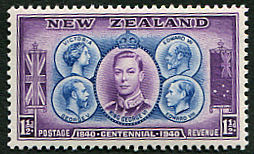
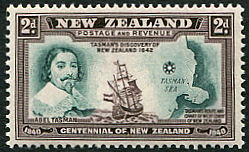
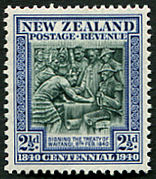

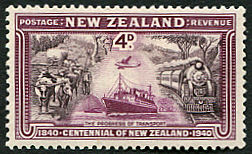

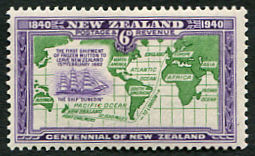
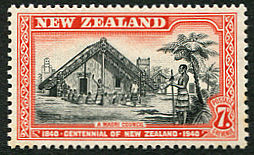

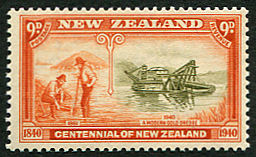
The 2½d and 5d values were issued in sheets of 160 (2½d in 10 rows of 16 and 5d in 16rows of 10) while the other values were in sheets of 120 (10 rows of 12). They were watermarked multi NZ and star. The 2½d value was perf 14 x 13½, the 5d was perf 13½ x 14 while the other values were perf 13½.
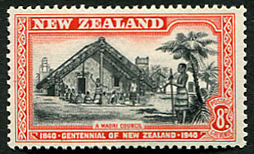
Due to the increase in postal rates in World War II, the 7d value was no longer required while an 8d value was needed for parcel post. The 7d value was withdrawn on 7 March 1940 and an 8d value, in the same design and colour as the 7d, was issued the next day.

Due to changes in postal rates, there was little demand for the ½d and 1½d values. The ½d value was eventually withdrawn on 31 May 1946.
New Zealand introduced an airgraph service with a postal rate of 10d.
To satisfy this, the remaining stocks of the 1½d Centennial
value were withdrawn on 31 January 1944 and 3,842,280 were surcharged 10d.
The surcharged stamp was issued on 1 May 1944.
The need for the 10d stamp did not last very long as the airgraph fee
was reduced from 10d to 3d on 24 August 1944.
The total numbers printed are given below with the numbers subsequently overprinted Official given in brackets. The 5d and 7d were not overprinted.
![]() ½d: 38,040,000 (1,082,760)
½d: 38,040,000 (1,082,760)
![]() 1d: 79,279,920 (3,452,880)
1d: 79,279,920 (3,452,880)
![]() 1½d: 11,552,000 (361,200) with 3,842,280 surcharged 10d
1½d: 11,552,000 (361,200) with 3,842,280 surcharged 10d
![]() 2d: 117,180,000 (6,960,360)
2d: 117,180,000 (6,960,360)
![]() 2½d: 2,280,000 (241,600)
2½d: 2,280,000 (241,600)
![]() 3d: 8,760,000 (904,200)
3d: 8,760,000 (904,200)
![]() 4d: 3,840,000 (481,200)
4d: 3,840,000 (481,200)
![]() 5d: 3,280,000
5d: 3,280,000
![]() 6d: 6,480,000 (661,200)
6d: 6,480,000 (661,200)
![]() 7d: 1,140,000 with 591,608 sold
7d: 1,140,000 with 591,608 sold
![]() 8d: 3,600,000 (240,840)
8d: 3,600,000 (240,840)
![]() 9d: 2,640,000 (241,200)
9d: 2,640,000 (241,200)
![]() 1/-: 3,978,360 (372,840)
1/-: 3,978,360 (372,840)
Plate Blocks
The ½d plates had 240 impressions arranged in two panes of 120. There were two plates numbered 1 and 2 and the top pane was labelled T and the bottom pane L. The stamps were issued in sheets of 120.
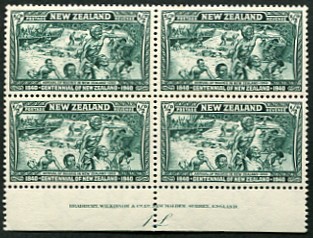
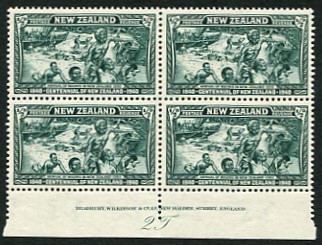
A large number of plates were used for the 1d and 2d values this issue. For the 1d, there were frame plates 1 - 6 and centre plates A - J while with the 2d, there were frame plates 1 - 10, and centre plates A - L (F6 and G9 shown) although not all possible combinations exist. There were two frame and two centre plates for the ½d, 3d and 10d values, two frame and three centre plates for the 1½d, one frame and two centre plates for the 9d while the other values such as the 2½d and 7d had one centre and one frame plate A1. Examples of the 1d, 1½d, 2d, 2½d, 7d and 10d are shown below.

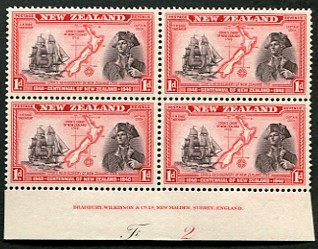
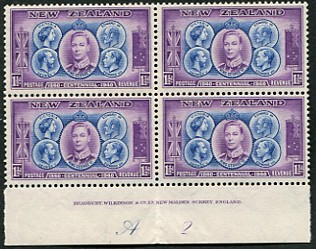
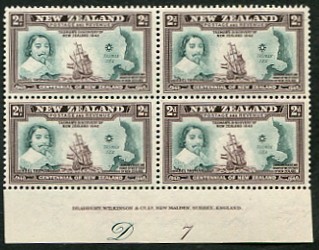
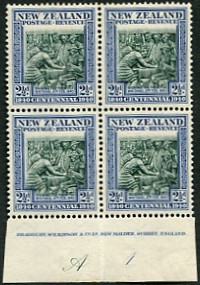
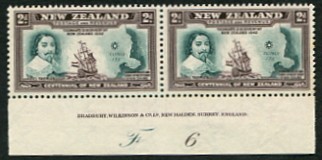
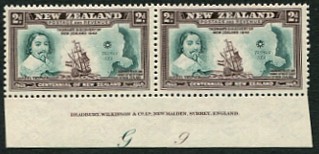
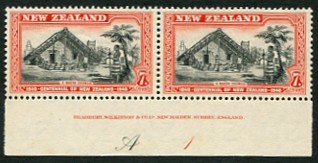

First day cover
This first day cover, addressed to South Africa, has the complete set issued on 2 January.
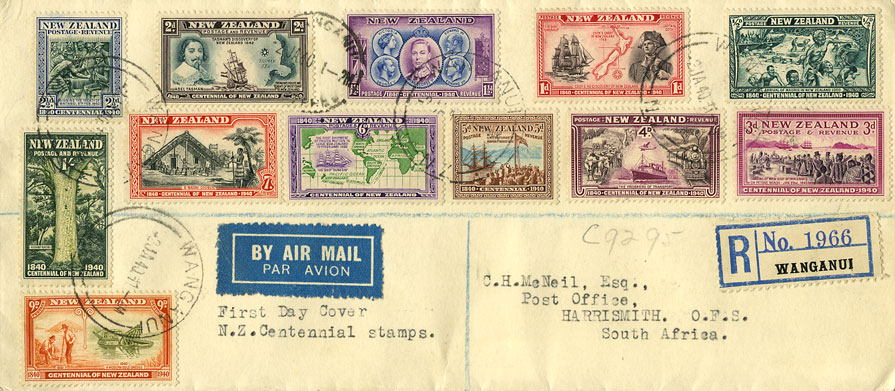
The above information is taken from The Postage Stamps of New Zealand Vol 2, published by the Royal Philatelic Society of New Zealand in 1950. All scans were made by the author.